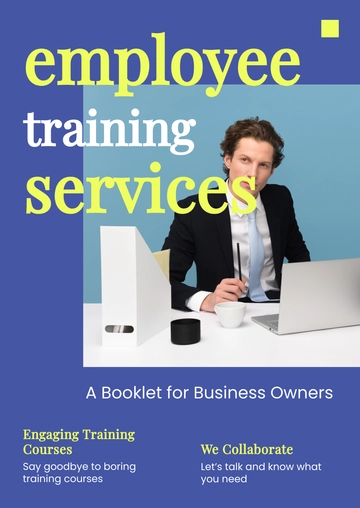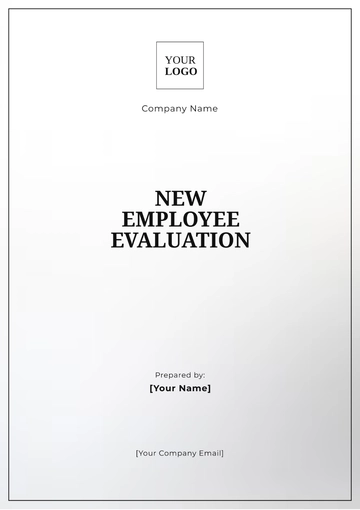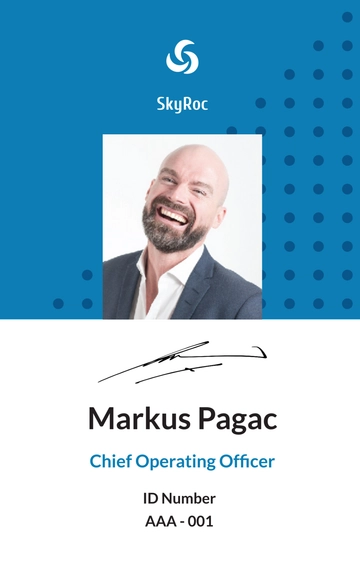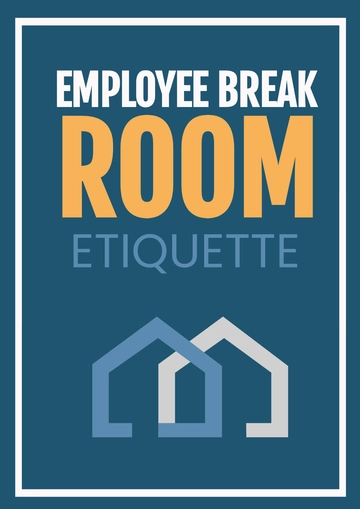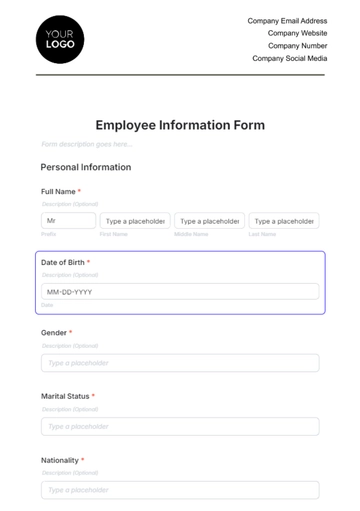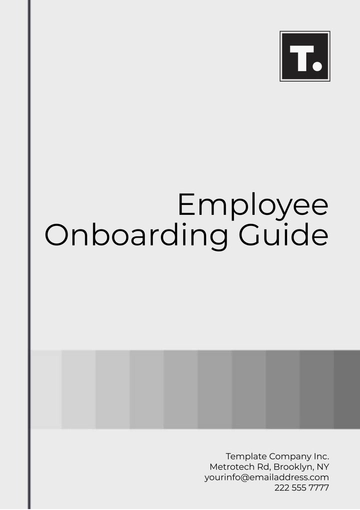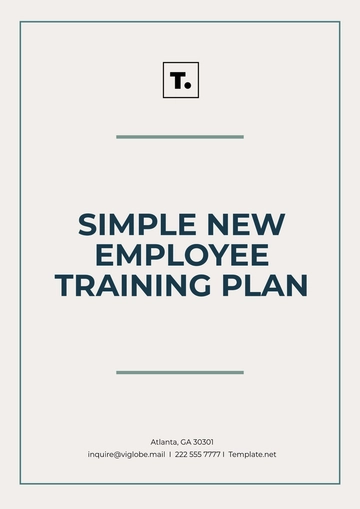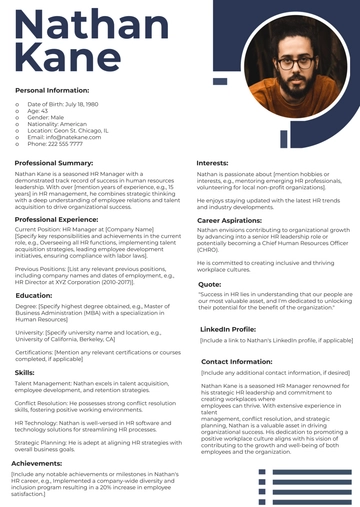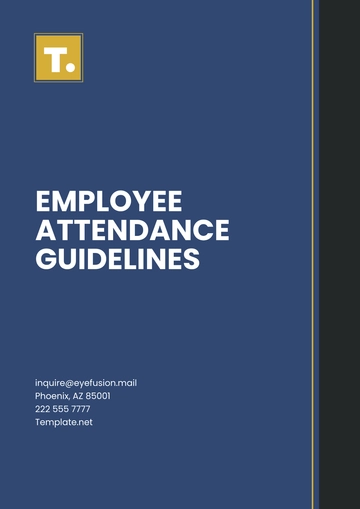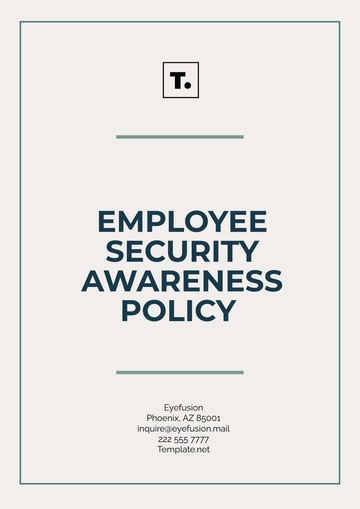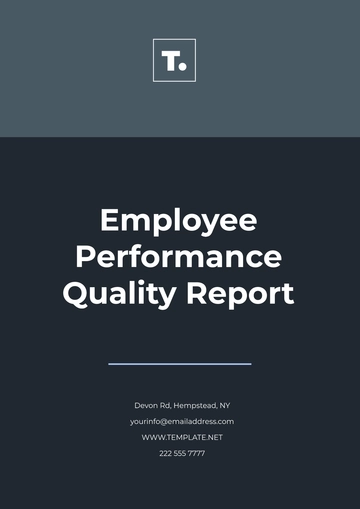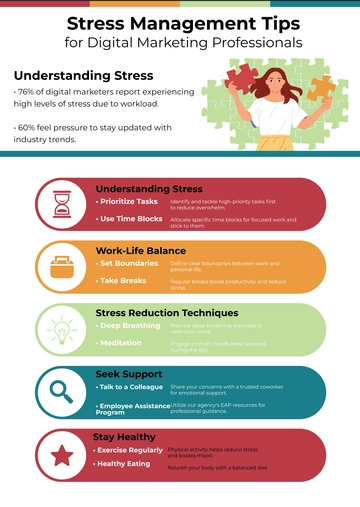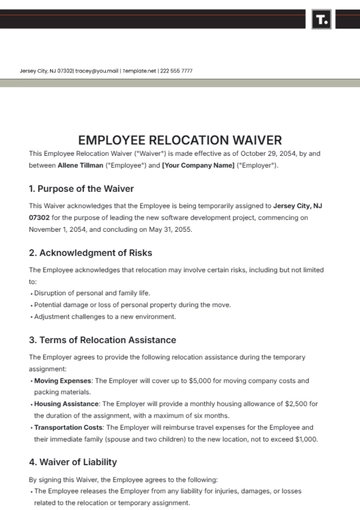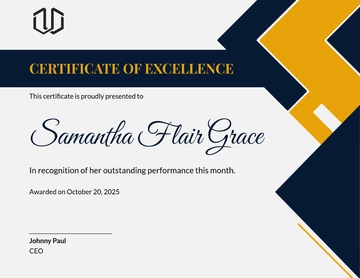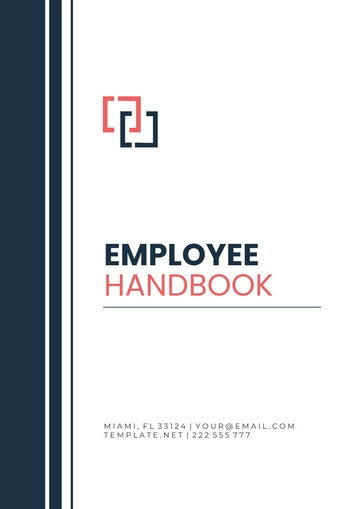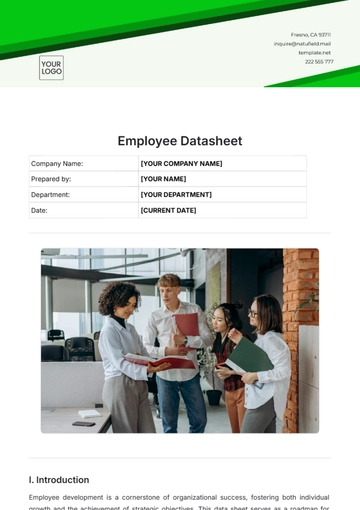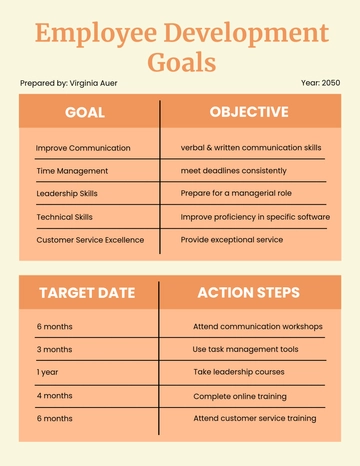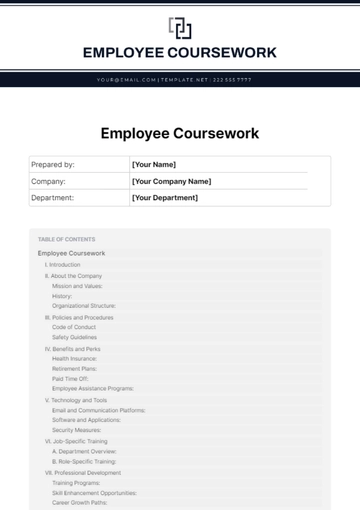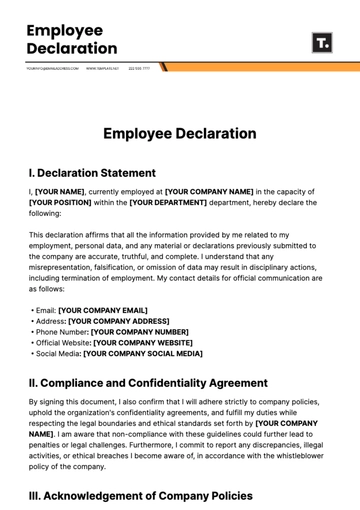Free Annual Employee Engagement & Performance Report HR
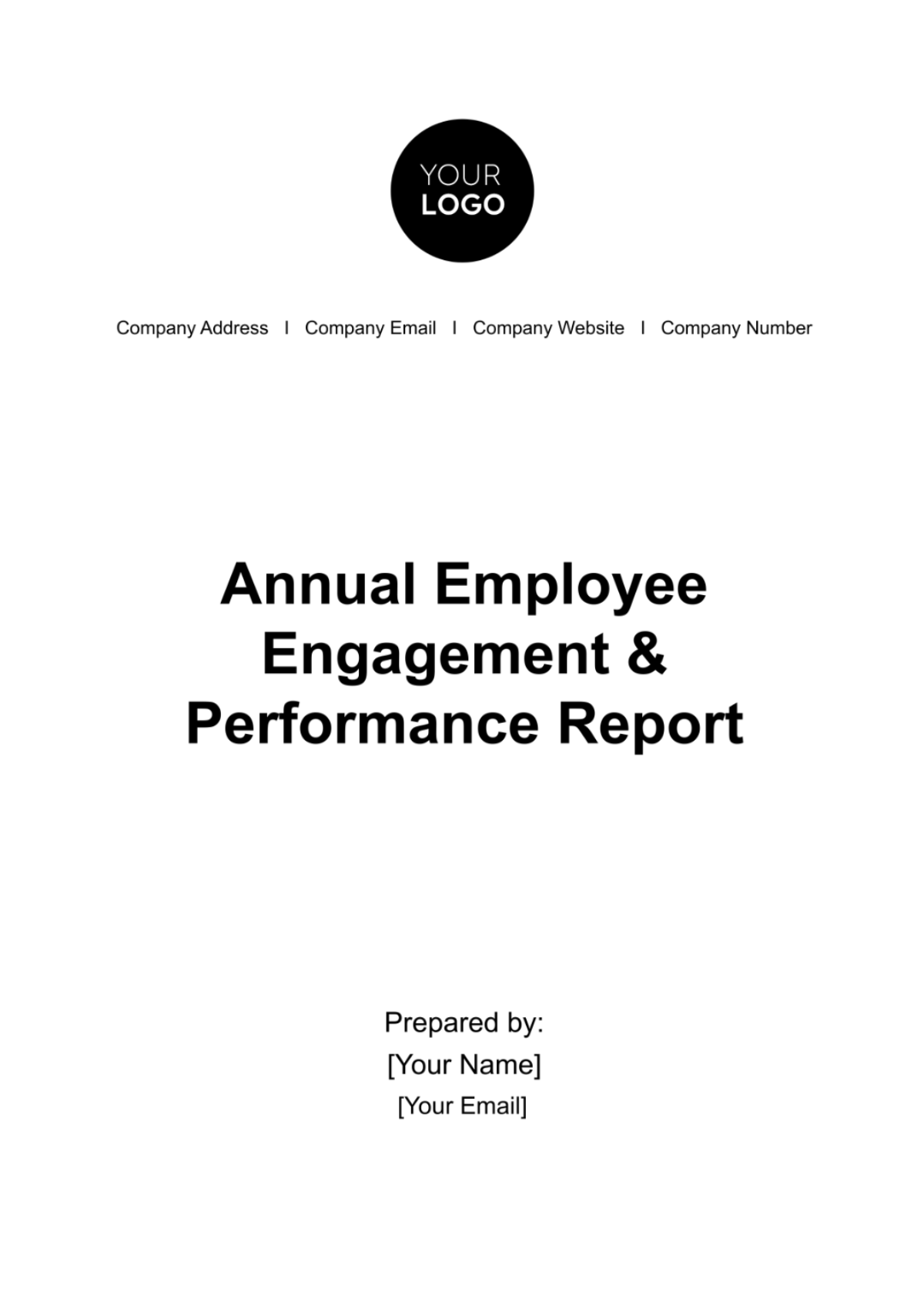
TABLE OF CONTENTS
Section 1: Introduction..........................................................................................3
Subsection 1.1: Purpose.................................................................................................3
Subsection 1.2: Scope....................................................................................................3
Section 2: Career Development Goals..................................................................3
Subsection 2.1: Short-Term Goals.................................................................................3
Subsection 2.2: Long-Term Goals.................................................................................3
Subsection 2.3: Goal Alignment with Company Vision...............................................3
Subsection 2.4: Goal Review and Adaptation..............................................................4
Section 3: Performance Expectations..................................................................4
Subsection 3.1: Current Role Performance..................................................................4
Subsection 3.2: Additional Responsibilities.................................................................4
Subsection 3.3: Performance Metrics..........................................................................4
Section 4: Skill Development................................................................................4
Subsection 4.1: Skill Assessment..................................................................................4
Subsection 4.2: Training and Development.................................................................5
Subsection 4.3: Mentoring and Coaching....................................................................6
Section 5: Career Progression Steps....................................................................6
Subsection 5.1: Junior-Level Positions.........................................................................6
Subsection 5.2: Intermediate-Level Positions.............................................................6
Subsection 5.3: Senior-Level Positions........................................................................6
Section 6: Performance Reviews..........................................................................6
Subsection 6.1: Regular Reviews...................................................................................6
Subsection 6.2: Feedback and Improvement...............................................................7
Section 7: Recognition and Rewards.....................................................................8
Subsection 7.1: Recognition Programs..........................................................................8
Subsection 7.2: Compensation Adjustments................................................................8
Subsection 7.3: Peer Recognition Initiatives................................................................8
Subsection 7.4: Personalized Recognition Plans.........................................................8
Section 8: Career Path Navigation........................................................................8
Subsection 8.1: Career Counselors...............................................................................8
Subsection 8.2: Job Postings and Opportunities........................................................9
Section 9: Performance Documentation..............................................................9
Subsection 9.1: Record Keeping...................................................................................9
Subsection 9.2: Performance Improvement Plans.....................................................9
Section 10: Conclusion.........................................................................................9
Subsection 10.1: Commitment to Growth.....................................................................9
Subsection 10.2: Continuous Improvement.................................................................9
Section 1: Introduction
Subsection 1.1: Purpose
The Career Ladder & Performance Alignment Plan serves as a dynamic tool to guide employees in achieving their career aspirations while actively contributing to the company's overarching mission and strategic objectives. It instills a sense of purpose by aligning individual growth with organizational success.
Subsection 1.2: Scope
This comprehensive plan encompasses all facets of career progression within the organization, providing employees with a holistic view of their potential trajectory. It also promotes a culture of transparency, ensuring that employees fully comprehend the expectations and opportunities available to them.
Section 2: Career Development Goals
Subsection 2.1: Short-Term Goals
Short-term career goals act as stepping stones, driving employees to continuously enhance their skills and seize opportunities for personal and professional growth. These goals empower individuals to make immediate, impactful contributions to their teams and the company
Subsection 2.2: Long-Term Goals
In the long term, setting ambitious career goals motivates employees to envision their future roles within the organization. By actively working toward these aspirations, employees become architects of their career journeys, fostering a sense of ownership and determination.
Subsection 2.3: Goal Alignment with Company Vision
Aligning individual career development goals with the company's overarching vision actively reinforces the notion that personal success contributes to organizational success. This alignment fosters a cohesive and unified approach toward achieving common objectives.
Subsection 2.4: Goal Review and Adaptation
Periodic review and adaptation of career development goals actively encourage employees to reassess and fine-tune their objectives as circumstances change. This flexibility ensures that goals remain relevant and attainable throughout one's career journey.
Section 3: Performance Expectations
Subsection 3.1: Current Role Performance
In their current roles, employees are expected to excel by actively engaging with their responsibilities and consistently seeking opportunities to innovate and optimize processes. Such proactive engagement ensures the organization benefits from its continuous commitment to excellence.
Subsection 3.2: Additional Responsibilities
Taking on additional responsibilities beyond job descriptions is a proactive step that not only enriches employees' skill sets but also demonstrates their dedication to contributing beyond their immediate roles, enhancing their visibility and influence within the organization.
Subsection 3.3: Performance Metrics
Performance metrics, characterized by clarity and measurability, serve as a compass, guiding employees toward objectives that are in sync with the organization's overall goals. These metrics facilitate continuous feedback and performance enhancement, enabling individuals to actively gauge their progress.
Section 4: Skill Development
Subsection 4.1: Skill Assessment
Frequent self-assessment of skills empowers employees to identify areas where they can actively improve, fostering a culture of continuous learning and adaptability within the organization.
Table 1: The Criteria for Skill Assessment
Criteria | Description | Purpose |
Skill Assessment | Employees actively assess their skills and identify areas for growth and improvement. | Empowers self-awareness and growth. |
Training and Development | The organization provides training opportunities and resources for skill enhancement. | Ensures skill alignment with the role. |
Mentoring and Coaching | Mentorship and coaching programs are available for skill development and guidance. | Fosters skill growth and confidence. |
In this subsection, we present a table outlining the criteria used for assessing employee performance and skill development. The first column, "Skill Assessment," emphasizes that employees actively engage in self-assessment to identify areas for skill improvement, fostering self-awareness and personal growth. The second column, "Training and Development," highlights the organization's commitment to providing training opportunities and resources, actively ensuring that employees align their skills with their roles. In the third column, "Mentoring and Coaching," we emphasize the availability of mentorship and coaching programs, which actively support skill development and provide guidance, contributing to employees' skill growth and confidence.
Subsection 4.2: Training and Development
The organization's provision of training opportunities and resources underscores its commitment to nurturing employees' skill development, ensuring that they are well-equipped to meet current and future challenges effectively.
Subsection 4.3: Mentoring and Coachin
Through mentorship and coaching, employees actively receive guidance and support to cultivate their strengths and address weaknesses, ultimately enabling them to progress on their career journey. This personalized approach fosters a sense of belonging and trust within the organization.
Section 5: Career Progression Steps
Subsection 5.1: Junior-Level Positions
Advancing from junior-level positions necessitates a proactive approach where employees consistently exceed expectations and actively seek growth opportunities. By mastering their current roles, they demonstrate their readiness for higher responsibilities.
Subsection 5.2: Intermediate-Level Positions
To attain intermediate-level positions, employees must actively showcase their ability to lead and inspire others while contributing significantly to their department's or team's goals. This level of performance establishes them as pivotal contributors to the organization's success.
Subsection 5.3: Senior-Level Positions
Elevation to senior-level positions signifies the highest echelon of an employee's career journey within the organization. Achieving this status requires employees to actively exemplify exceptional leadership, strategic thinking, and innovation, playing a pivotal role in shaping the organization's future.
Section 6: Performance Reviews
Subsection 6.1: Regular Reviews
We introduce a table that outlines the criteria used during performance reviews. The first column, "Regular Reviews," underscores the importance of conducting these reviews periodically to actively assess progress and provide timely feedback, creating a continuous feedback loop for employees. The second column, "Feedback and Improvement," highlights that we actively use the feedback we obtained from reviews to identify areas for improvement, fostering professional growth and performance enhancement. In the third column, "Alignment with Goals," we stress that performance reviews evaluate how well employee performance aligns with both personal and organizational goals, ensuring ongoing synchronization of objectives.
Table 2: Criteria for Performance Assessment and Review
Criteria | Description | Purpose |
Regular Reviews | Performance reviews are conducted periodically to assess progress and provide feedback. | Ensures continuous feedback loop. |
Feedback and Improvement | Feedback is used to identify areas for improvement, fostering professional growth. | Facilitates performance enhancement. |
Alignment with Goals | Reviews assesses how well employee performance aligns with both personal and organizational goals | Ensures objectives remain synchronized. |
Conducting regular performance reviews empowers employees to actively assess their progress toward career goals and receive timely feedback. These reviews enable an ongoing dialogue between employees and their supervisors, ensuring alignment with organizational objectives remains a dynamic and evolving process.
Subsection 6.2: Feedback and Improvement
Feedback derived from performance reviews actively guides employees on their journey toward achieving career objectives. It provides actionable insights that allow individuals to make necessary improvements, fostering a culture of continuous self-improvement and organizational growth.
Section 7: Recognition and Rewards
Subsection 7.1: Recognition Programs
Participation in recognition programs actively motivates employees to strive for excellence. Recognition serves as a catalyst, propelling individuals to actively pursue opportunities for growth, innovation, and outstanding performance.
Subsection 7.2: Compensation Adjustments
Accompanying promotions and career advancements, compensation adjustments actively demonstrate the organization's appreciation for employees' contributions. These adjustments reinforce the belief that dedication and performance are valued and rewarded within the company.
Subsection 7.3: Peer Recognition Initiatives
Peer recognition initiatives actively encourage employees to acknowledge and appreciate the contributions of their colleagues. This fosters a culture of mutual respect and collaboration, where employees actively support each other's growth and success.
Subsection 7.4: Personalized Recognition Plans
Personalized recognition plans actively recognize and celebrate individual achievements and milestones. These plans ensure that recognition efforts are tailored to the unique contributions and aspirations of each employee, reinforcing a sense of individual value within the organization.
Section 8: Career Path Navigation
Subsection 8.1: Career Counselors
The availability of career counselors actively supports employees in navigating their career paths. By actively seeking guidance from these experts, individuals gain insights and strategies to overcome challenges and make informed decisions about their futures within the organization.
Subsection 8.2: Job Postings and Opportunities
Transparent communication of job postings and internal opportunities actively empowers employees to make informed choices about their career trajectories. This clarity ensures that individuals are aware of openings that align with their aspirations.
Section 9: Performance Documentation
Subsection 9.1: Record Keeping
Comprehensive record-keeping of performance actively facilitates transparent communication between employees and their supervisors. These records provide an objective basis for evaluating performance and making data-driven decisions regarding career development.
Subsection 9.2: Performance Improvement Plans
When necessary, the development of Performance Improvement Plans actively supports employees in addressing performance gaps. These plans are a proactive approach to help individuals actively meet and exceed performance expectations, ensuring alignment with career goals and organizational objectives.
Section 10: Conclusion
Subsection 10.1: Commitment to Growth
The organization's commitment to fostering employee growth actively reinforces the idea that we value individuals as key assets. It emphasizes that success is a shared journey where employees actively contribute to organizational success while pursuing their career aspirations.
Subsection 10.2: Continuous Improvement
The periodic review and updates of this Career Ladder & Performance Alignment Plan actively reflect the organization's commitment to ongoing enhancement. It ensures that the plan remains a living document, continuously adapting to evolving organizational needs and employee expectations, thereby fostering a culture of continuous improvement and development.
- 100% Customizable, free editor
- Access 1 Million+ Templates, photo’s & graphics
- Download or share as a template
- Click and replace photos, graphics, text, backgrounds
- Resize, crop, AI write & more
- Access advanced editor
Unlock workforce potential with our Annual Employee Engagement & Performance Report HR Template. Effortlessly compile performance metrics, engagement survey results, and growth opportunities in one comprehensive document. Drive data-driven HR decisions, foster employee development, and strengthen organizational bonds. Elevate your company's success by investing in your most valuable asset – your people.
You may also like
- Employee Letter
- Employee ID Card
- Employee Checklist
- Employee Certificate
- Employee Report
- Employee Training Checklist
- Employee Agreement
- Employee Contract
- Employee Training Plan
- Employee Incident Report
- Employee Survey
- Employee of the Month Certificate
- Employee Development Plan
- Employee Action Plan
- Employee Roadmap
- Employee Poster
- Employee Form
- Employee Engagement Survey
